The human face is a canvas of emotion. It reflects our thoughts, our moods, and—often without our awareness—our mental load. While laughter can etch crow’s feet into the corners of our eyes and joy might bring a glow to our cheeks, prolonged stress can leave a far more insidious mark. The phenomenon of facial stress lines is more than a cosmetic concern; it is an indicator of deeper psychological strain. From the furrows in the brow to the tension around the mouth, stress lines on the face may reveal how our internal battles manifest externally. In a world increasingly dominated by high-speed decision-making, digital overload, and emotional burnout, understanding the connection between facial expressions and mental well-being is not just important—it’s essential.
You may also like: How to Choose Skin Care for Fine Lines: Evidence-Based Tips for Healthier, Younger-Looking Skin
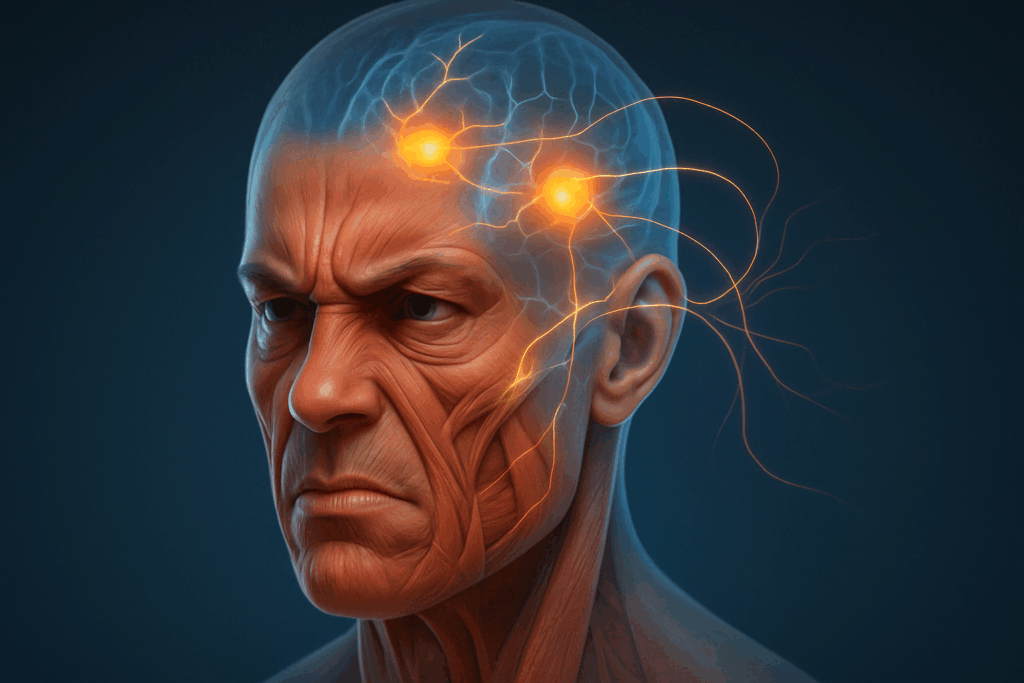
Facial stress lines are not merely signs of aging, nor should they be dismissed as trivial aesthetic flaws. Emerging research suggests that these facial imprints may offer insight into the emotional toll a person endures over time. The lines, creases, and furrows that develop in response to repeated muscle contractions—particularly those triggered by stress—can serve as visual cues of chronic psychological tension. By unpacking the neurological, physiological, and emotional mechanisms behind these lines, we gain a clearer understanding of how mental strain leaves its imprint on the body. More importantly, we can begin to explore what these facial signs might mean for early mental health detection, treatment, and self-awareness.
The Science Behind Stress and Facial Muscle Activity
To appreciate how stress impacts the face, it is crucial to understand the underlying anatomy. The human face comprises 43 muscles, many of which are directly linked to emotional expression. These muscles are innervated by the facial nerve, which is controlled by the brain’s emotional centers, including the amygdala and prefrontal cortex. When we experience psychological stress, our brain sends signals through the autonomic nervous system, preparing the body for a fight-or-flight response. This reaction triggers muscle tension, increases cortisol levels, and initiates various involuntary responses—including those in the face.
Under stress, individuals may unconsciously clench their jaw, raise their eyebrows, or furrow their brow. While these microexpressions may initially be fleeting, chronic or unrelenting stress can cause them to become habitual. Over time, these repetitive contractions lead to the formation of stress lines on the face, especially in areas such as the forehead, between the eyebrows (known as glabellar lines), and around the mouth. The correlation between facial muscle usage and emotional state is so strong that some psychological assessments even use facial recognition software to detect signs of distress.
What’s particularly compelling is the bidirectional nature of this relationship. Just as emotional states can alter facial expressions, those very expressions can, in turn, influence emotions. Studies in psychophysiology suggest that engaging certain facial muscles can affect mood through a feedback mechanism. For instance, frowning not only signals sadness but may also reinforce depressive feelings. This loop—where mental state shapes the face and the face shapes the mental state—underscores the importance of recognizing and responding to facial stress lines as more than superficial concerns.
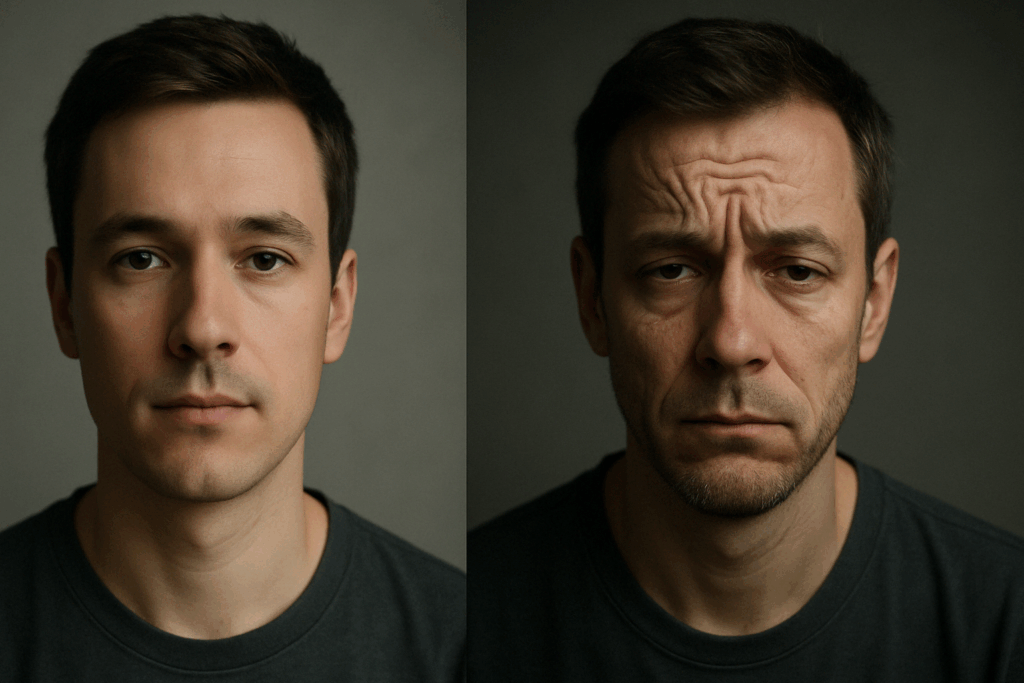
Facial Stress Lines as Biomarkers of Mental Load
In recent years, the concept of using facial features as biomarkers for psychological states has gained traction. Researchers and clinicians alike are exploring how specific facial stress lines might serve as indicators of mental fatigue, burnout, and emotional exhaustion. In particular, deep horizontal lines across the forehead are often associated with chronic worry or cognitive overload, while vertical lines between the brows can indicate frustration or persistent anxiety.
These observations are not merely anecdotal. A growing body of literature supports the notion that stress-related facial changes may be linked to neuroendocrine activity, especially involving the hypothalamic-pituitary-adrenal (HPA) axis. Chronic activation of this system can result in elevated cortisol levels, which not only impact internal organ systems but also accelerate changes in skin elasticity and connective tissue health. This is one reason why stress lines on the face tend to appear earlier and more prominently in individuals who experience prolonged psychological strain.
Moreover, stress-induced changes to facial skin go beyond lines and wrinkles. Conditions like stress acne, rosacea, and eczema often co-occur with facial stress lines, suggesting a complex interplay between psychological distress and dermatological outcomes. The face, in this context, becomes both a mirror and a messenger—a visible interface between mind and body.

The Psychological Interpretation of Stress Lines
Facial stress lines are often viewed through a cosmetic lens, especially in Western culture, where the pursuit of youthfulness is deeply ingrained. However, when interpreted through the framework of psychological well-being, these lines offer a more profound narrative. Rather than being mere signs of aging, they may be understood as emotional footprints—markers of resilience, struggle, and survival.
From a psychological standpoint, the presence of stress lines on the face can influence self-perception and social interaction. Individuals who perceive their facial lines as evidence of fatigue or burden may internalize feelings of diminished vitality or attractiveness, which can exacerbate anxiety or depressive symptoms. Additionally, facial stress lines may unconsciously influence how others perceive us, potentially affecting social dynamics and workplace interactions. For example, a perpetually furrowed brow might be misinterpreted as anger or disapproval, even when the individual is experiencing internal distress.
This misalignment between internal experience and external perception can lead to emotional dissonance—a condition in which people feel unseen or misunderstood. In therapeutic contexts, acknowledging the role of facial expressions and their visible consequences can foster greater self-awareness and emotional insight. Therapists who are attuned to the somatic expressions of stress, including facial tension and stress lines, may be better equipped to recognize unspoken distress in their clients and respond with appropriate interventions.
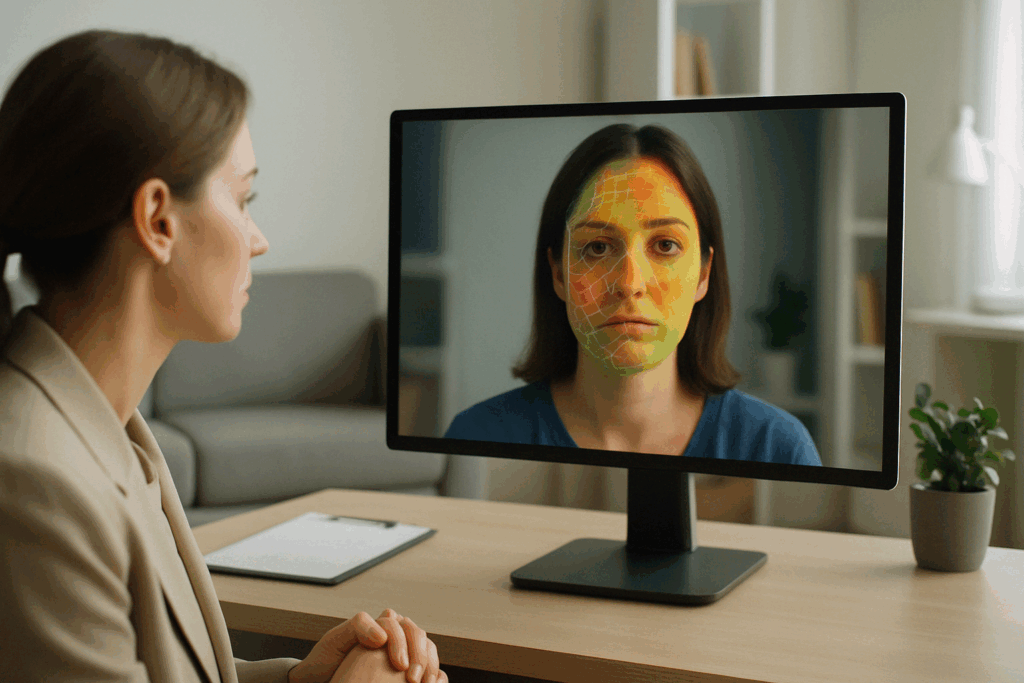
The Role of Technology in Detecting Facial Stress
Technological advancements have made it increasingly possible to quantify and analyze facial stress lines for clinical and wellness purposes. Facial recognition software, once used primarily for security applications, is now being adapted for mental health monitoring. By analyzing microexpressions and subtle changes in facial topography, these systems can provide early warnings of emotional strain.
For instance, AI-based tools can detect minute changes in muscle tension and skin folds, correlating them with known stress patterns. Some applications are being developed for telehealth platforms, allowing clinicians to assess emotional well-being during virtual sessions. Others are used in corporate wellness programs to gauge employee burnout risk or in educational settings to monitor student engagement and fatigue. These tools offer promise in supporting early intervention strategies, especially in high-stress professions where mental health issues often go unreported.
However, there are ethical considerations to keep in mind. The use of facial data raises concerns about privacy, consent, and potential misuse. While the technology is promising, it must be deployed with transparency and rigorous ethical standards. Nonetheless, the capacity to observe stress-related facial changes in real time represents a significant step forward in integrating physiological data into mental health assessment and care.
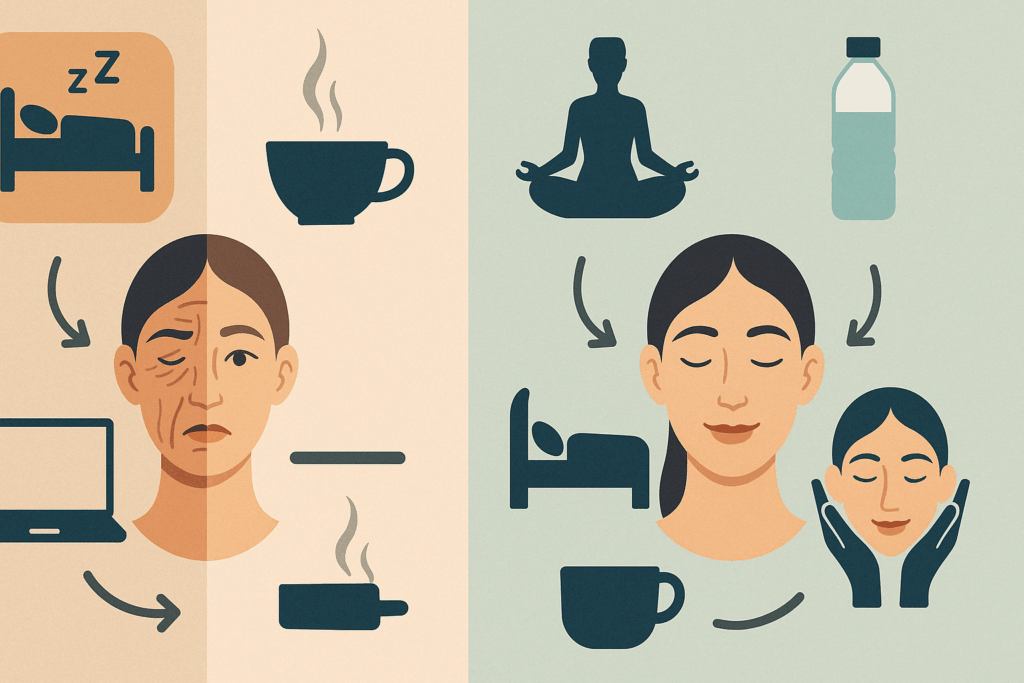
Lifestyle, Habits, and the Accumulation of Facial Stress
While acute stress can leave a temporary imprint on the face, it is chronic lifestyle factors that often determine the depth and permanence of stress lines. Poor sleep, inadequate hydration, high caffeine intake, and smoking can all accelerate the development of facial stress lines by compromising skin health and perpetuating systemic inflammation. Moreover, a sedentary lifestyle, lack of sunlight exposure, and nutritional deficiencies—particularly in vitamins A, C, D, and E—may reduce the skin’s ability to repair itself and maintain elasticity.
Mental habits are just as important. Rumination, perfectionism, and negative self-talk can sustain high levels of internal tension, manifesting in facial expressions that become habitual over time. Even the way one holds their face at rest—sometimes called the “facial baseline”—can be shaped by years of emotional posture. For instance, someone who regularly suppresses anger or sadness may develop tightness around the jaw or eyes that eventually leads to visible creasing.
Breaking the cycle involves more than applying skincare products or seeking cosmetic interventions. It requires cultivating emotional regulation skills, adopting stress-reducing habits such as mindfulness meditation or somatic therapies, and developing greater body awareness. Activities like yoga, deep breathing, and progressive muscle relaxation not only reduce subjective stress but can also relieve facial tension, potentially slowing the formation of facial stress lines.
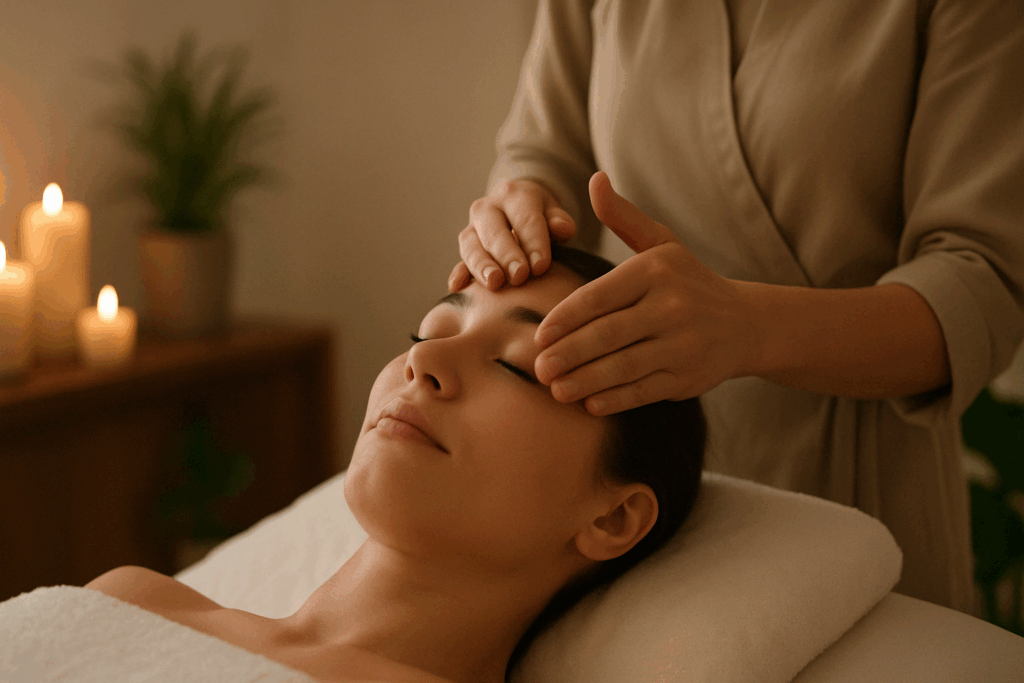
Facial Massage and Somatic Therapies as Preventive Care
Facial massage and other somatic therapies offer a non-invasive, evidence-based way to manage facial stress and its visible effects. Techniques such as lymphatic drainage, acupressure, and myofascial release target facial muscles and connective tissues to reduce tension and improve circulation. These methods not only enhance skin tone and promote detoxification but also interrupt the stress-feedback loop by encouraging parasympathetic nervous system activation.
Incorporating regular facial massage into a self-care routine can yield both aesthetic and psychological benefits. By consciously relaxing facial muscles, individuals may become more attuned to their emotional state and recognize early signs of tension. Some practitioners combine facial massage with affirmations or breathwork to reinforce the connection between mind and body. Others integrate it into trauma-informed practices, where releasing facial tension becomes a step toward emotional healing.
Somatic therapies that focus on the face are also gaining popularity in clinical psychology and bodywork disciplines. These approaches emphasize the body’s role in storing and expressing trauma, including in the microstructures of the face. Clients who have experienced prolonged emotional suppression often find relief when facial tension is addressed directly. In this way, addressing facial stress lines is not just about surface-level change—it can be part of a deeper process of psychological transformation.
Rethinking Aesthetics: From Anti-Aging to Emotional Literacy
Culturally, there has long been an emphasis on minimizing or erasing facial lines in the name of beauty. However, there is a growing movement to reconsider this paradigm. Rather than viewing facial stress lines as flaws to be corrected, some advocates encourage interpreting them as natural records of emotional life. This shift parallels a broader trend in mental health toward authenticity, self-acceptance, and emotional transparency.
Understanding what stress lines on the face reveal can empower individuals to listen to their bodies and take proactive steps toward self-care. It also invites a more compassionate view of aging—one that honors the emotional journey written across the skin. By recognizing facial stress lines as part of a dynamic feedback system between mind and body, we move beyond cosmetic solutions and toward a more integrated model of wellness.
In clinical settings, this perspective may enhance therapeutic rapport, especially when clients feel seen not just for what they say but for how their bodies communicate. In public health messaging, shifting the narrative around facial aging can reduce stigma and promote holistic well-being. Ultimately, reframing the meaning of facial stress lines may help dismantle unrealistic beauty standards and foster greater mental health awareness.
Recognizing the Signs and Taking Action
If you begin to notice stress lines on your face that seem deeper, more persistent, or newly formed during a period of emotional hardship, it may be worth pausing to evaluate your overall mental well-being. Consider whether these changes correspond with increased workload, sleep disturbances, or unresolved emotional conflicts. Consult with a healthcare professional—not just a dermatologist, but also a psychologist or holistic health provider—who can help assess the underlying factors.
It’s also essential to distinguish between lines that are the natural result of aging and those that stem from chronic stress. The difference often lies in the timeline and context. Lines that appear suddenly or are accompanied by other signs of emotional exhaustion—such as irritability, fatigue, or social withdrawal—may warrant further exploration. Rather than treating the skin in isolation, addressing the emotional drivers behind these facial changes can result in more lasting improvements.
Simple interventions can make a meaningful difference. Prioritizing restorative sleep, cultivating emotional expression, seeking therapy, and engaging in regular movement are all ways to support both psychological and dermal health. Likewise, practicing self-compassion when you see stress lines in the mirror—rather than criticism—can shift your relationship with both your appearance and your emotional state.
Frequently Asked Questions: Facial Stress Lines and Emotional Health
1. Can facial stress lines offer clues about specific emotional patterns?
Yes, facial stress lines can sometimes reflect underlying emotional patterns that have developed over years. For instance, people who frequently experience worry might develop deep horizontal lines on the forehead, while those prone to irritation may see vertical lines between the brows. However, the relationship isn’t purely mechanical—these stress lines on the face may also indicate how someone processes emotions internally. Chronic suppression of feelings such as anger or sadness can lead to habitual muscular tension, which over time becomes embedded in the skin’s topography. Understanding these patterns can help mental health professionals and individuals alike gain insight into emotional tendencies and develop personalized coping strategies.
2. Are facial stress lines reversible if the emotional causes are addressed?
While complete reversal may not always be possible, particularly if stress lines on the face have become deep-set, significant improvement is often achievable. Emotional healing—through therapy, mindfulness, or lifestyle changes—can reduce the frequency of facial tension, which may soften the appearance of these lines. Somatic therapies, such as biofeedback and facial massage, can also retrain the muscles and improve blood flow, promoting skin regeneration. What’s often overlooked is how facial expressions change when internal peace is restored, gradually reshaping the habitual posture of the face. In some cases, dermatological treatments may support the process, but addressing the root emotional drivers remains key.
3. How do social perceptions of facial stress lines influence mental well-being?
Social interpretations of facial stress lines often carry unintended psychological consequences. In workplace or social contexts, individuals with pronounced stress lines on the face may be perceived as fatigued, unapproachable, or even stern—regardless of their actual mood. This misperception can lead to reduced confidence or feelings of isolation, further reinforcing emotional stress. People may overinvest in cosmetic solutions to “fix” their appearance without addressing the psychological origins of their tension. Recognizing these dynamics allows for a more compassionate approach to both self-image and interpersonal communication.
4. Do certain occupations increase the likelihood of developing facial stress lines?
Yes, high-pressure careers such as teaching, healthcare, corporate leadership, and emergency response are often associated with a greater likelihood of developing facial stress lines. Constant emotional labor, decision-making under stress, and long work hours contribute to habitual facial tension. In these environments, people may suppress expressions to appear composed, leading to fixed facial patterns that eventually form stress lines on the face. Unlike general aging, these occupational influences create highly specific muscular patterns that reflect profession-specific burdens. Employers promoting mental health programs can help reduce these patterns by addressing stress at its root.
5. Can facial stress lines provide early warning signs of burnout?
Emerging psychological research suggests that facial stress lines might serve as subtle early indicators of occupational or emotional burnout. Before cognitive symptoms such as mental fog or emotional numbness appear, changes in facial expression and tension may already be visible. A perpetually furrowed brow or tightened jawline can signal internal overload, even when verbal complaints are absent. Observing these early markers—especially when combined with shifts in sleep, mood, or appetite—can prompt timely interventions. Regular self-checks and facial awareness can help individuals recognize when their stress is becoming unsustainable.
6. How can digital wellness tools use facial stress lines to support mental health?
Innovative technologies are integrating facial recognition with wellness tracking to monitor emotional health through facial stress lines. These tools can assess micro-changes in muscle tension and skin elasticity, flagging patterns consistent with emotional distress. Unlike traditional mental health screenings, this non-verbal method offers real-time feedback and may be particularly useful for individuals who struggle to articulate their emotions. When integrated with wearable devices, these systems could support early intervention by alerting users or healthcare providers to stress-related risks. However, ethical standards and privacy safeguards must be upheld in their implementation.
7. Are facial stress lines influenced by cultural expression norms?
Cultural factors play a significant role in how facial stress lines develop and are interpreted. In cultures where emotional restraint is valued, individuals may internalize stress and limit expressive movement, which can lead to specific, static stress lines on the face. Conversely, in cultures where expressive communication is encouraged, dynamic facial movement may spread muscular stress more evenly, potentially delaying deep line formation. Cultural norms can also shape the psychological meaning assigned to these lines, with some viewing them as symbols of wisdom or life experience rather than aesthetic flaws. Recognizing these cultural lenses can foster greater self-acceptance and reduce stigma.
8. What role does hormonal balance play in the development of facial stress lines?
Hormonal imbalances—particularly involving cortisol, estrogen, and testosterone—can significantly affect skin health and the development of facial stress lines. Elevated cortisol, the body’s primary stress hormone, accelerates collagen breakdown, making the skin more prone to wrinkling under tension. Meanwhile, declining estrogen levels during menopause can reduce skin elasticity, amplifying the appearance of existing stress lines on the face. Hormonal therapies or lifestyle interventions that restore balance can therefore play a critical role in preventing premature aging linked to stress. Collaborating with a healthcare provider ensures a personalized and medically appropriate approach.
9. Is there a connection between facial breathing patterns and stress line development?
Yes, the way we breathe—especially under stress—can affect how and where facial tension accumulates. Shallow, chest-based breathing often accompanies anxiety and leads to subtle tightening around the eyes, nose, and mouth. Over time, this tension becomes habitual and may contribute to more pronounced facial stress lines in those areas. Conscious breathwork practices like diaphragmatic breathing or alternate nostril breathing can release this tension and restore facial symmetry. Paying attention to breath patterns during emotionally intense moments offers a powerful and underutilized strategy for protecting both emotional balance and facial integrity.
10. How can individuals track facial stress line changes as part of mental health monitoring?
Photographic journaling is a simple yet effective method for tracking changes in facial stress lines over time. By taking regular, high-quality photos in consistent lighting, individuals can observe patterns of muscle use and identify areas that reflect tension buildup. Pairing these observations with mood journals or stress logs can offer valuable correlations between emotional states and facial changes. This practice encourages emotional awareness and promotes proactive mental health care by highlighting the tangible effects of psychological strain. Over time, people often learn to recognize stress line development as a personal barometer of emotional health, motivating earlier interventions and more mindful living.
Reflecting on the Emotional Imprint of Stress Lines
Stress lines on the face tell a story—one that is uniquely personal yet universally human. They reflect the burdens we carry, the resilience we build, and the emotional currents that shape our lives over time. Understanding facial stress lines as more than superficial features allows us to see them as windows into our mental load, offering both insight and an invitation to care more deeply for our inner world.
Rather than simply seeking to erase these lines, we might ask what they are trying to communicate. What stressors have gone unspoken? What emotional needs have been overlooked? And how can we use these physical markers as guides toward greater self-awareness and healing? By integrating psychological insight, technological tools, and compassionate self-care, we can move toward a more holistic understanding of health—one that embraces both the visible and invisible dimensions of well-being.
In a culture that often prizes appearances over authenticity, recognizing the emotional truth behind stress lines on the face is a radical act of self-knowledge. It’s a reminder that the face does not merely age—it speaks. And when we learn to listen, we not only see more clearly but live more fully.
Was this article helpful? Don’t let it stop with you. Share it right now with someone who needs to see it—whether it’s a friend, a colleague, or your whole network. And if staying ahead on this topic matters to you, subscribe to this publication for the most up-to-date information. You’ll get the latest insights delivered straight to you—no searching, no missing out.
Further Reading:
Effects of mild psychological stress on facial impressions
10 Effects of Stress on Your Face, and How to Lower Anxiety
Stress and anxiety detection using facial cues from videos
Disclaimer
The information contained in this article is provided for general informational purposes only and is not intended to serve as medical, legal, or professional advice. While Health11News strives to present accurate, up-to-date, and reliable content, no warranty or guarantee, expressed or implied, is made regarding the completeness, accuracy, or adequacy of the information provided. Readers are strongly advised to seek the guidance of a qualified healthcare provider or other relevant professionals before acting on any information contained in this article. Health11News, its authors, editors, and contributors expressly disclaim any liability for any damages, losses, or consequences arising directly or indirectly from the use, interpretation, or reliance on any information presented herein. The views and opinions expressed in this article are those of the author(s) and do not necessarily reflect the official policies or positions of Health11News.